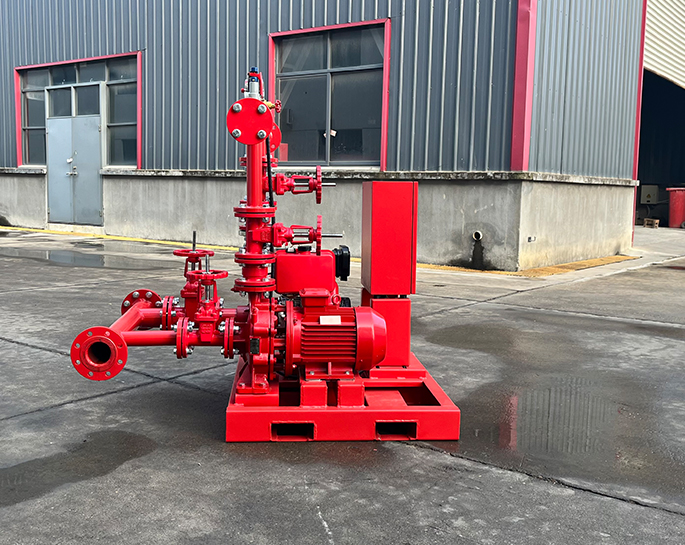Fire pump bypass lines play a crucial role in ensuring the proper functioning and safety of fire pump systems. These lines are designed to redirect water in specific situations, and they are often equipped with a bypass valve. Here are the key roles and testing procedures associated with fire pump bypass lines:
### Role of Fire Pump Bypass Lines:
1. **Pressure Relief:**
- **Overpressure Protection:** In the event of excessive pressure within the fire pump system, the bypass line allows water to be diverted, preventing damage to the pump, piping, and other components.
- **Protection Against Thermal Expansion:** Bypass lines can also handle excess pressure resulting from thermal expansion in the system.
2. **System Testing and Maintenance:**
- **Flow Testing:** Bypass lines facilitate flow testing of the fire pump system without causing unnecessary strain on the pump. During testing, the bypass valve is partially opened to allow water to flow back into the water source, preventing overpressurization of the system.
- **Regular Maintenance:** Bypass lines enable routine maintenance and inspection of the pump without affecting the water distribution system.
3. **Pump Startup and Priming:**
- **Initial Startup:** During the startup of the fire pump, the bypass line can be used to gradually bring the pump up to speed and prime the system without causing abrupt pressure changes.
- **Priming Operation:** The bypass valve may be opened slightly during the priming process to allow air to escape from the system.
### Testing Procedures:
1. **Flow Test:**
- **Partial Bypass:** To test the bypass line, the system is operated with the bypass valve partially open. This allows a controlled flow of water through the bypass line while the pump is in operation.
- **Pressure Monitoring:** During the test, pressure is monitored to ensure it remains within acceptable limits. Excessive pressure indicates a potential issue with the bypass line or valve.
2. **Overpressure Testing:**
- **Bypass Activation:** Simulating an overpressure condition, the bypass line is activated to divert water away from the pump.
- **Pressure Relief Verification:** The test verifies that the bypass line effectively relieves pressure and protects the pump and system from damage.
3. **Valve Operation Test:**
- **Functional Testing:** The bypass valve is manually operated to ensure that it opens and closes smoothly. This verifies that the valve is in good working condition and can be relied upon in case of an emergency.
4. **Inspection and Maintenance:**
- **Visual Inspection:** Regular visual inspections are conducted to check for any signs of corrosion, leaks, or damage in the bypass line and valve.
- **Periodic Maintenance:** Lubrication, tightening of bolts, and replacement of any worn components are part of routine maintenance procedures.
5. **Documentation:**
- **Record Keeping:** All testing, inspections, and maintenance activities related to fire pump bypass lines should be documented for regulatory compliance and historical reference.
Testing of fire pump bypass lines is essential to ensure their functionality in emergency situations. Regular testing and maintenance contribute to the overall reliability of the fire pump system and its components.



